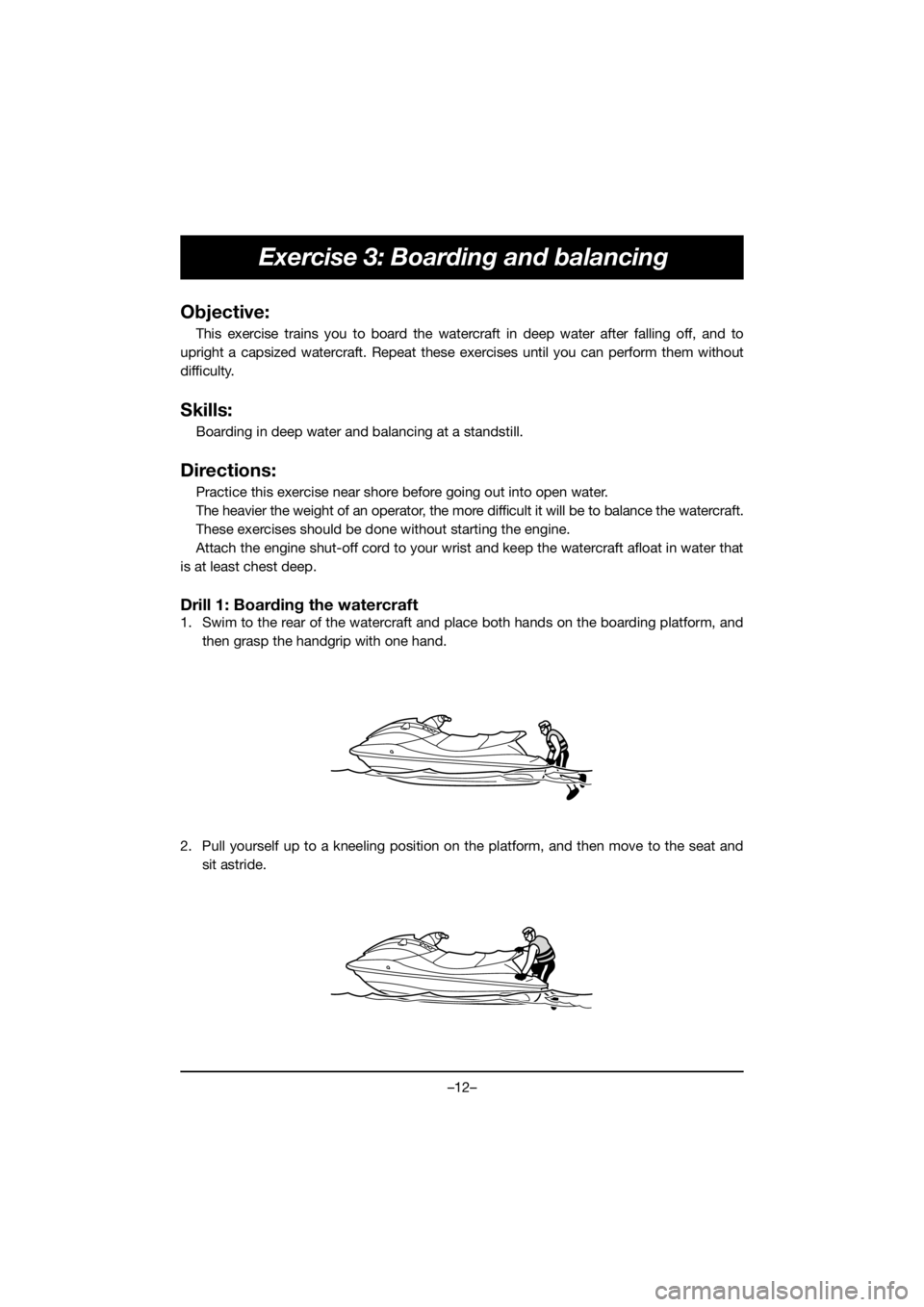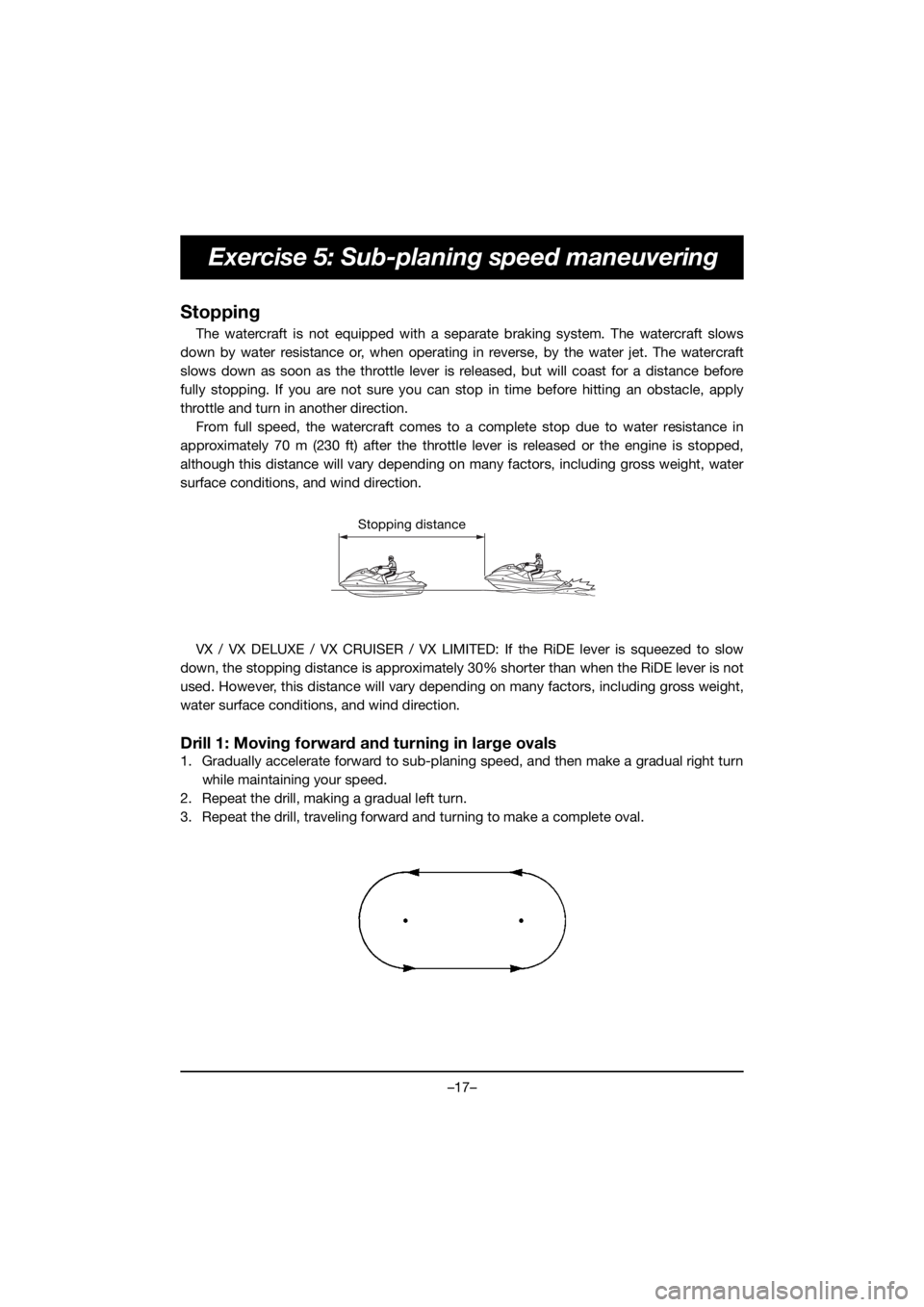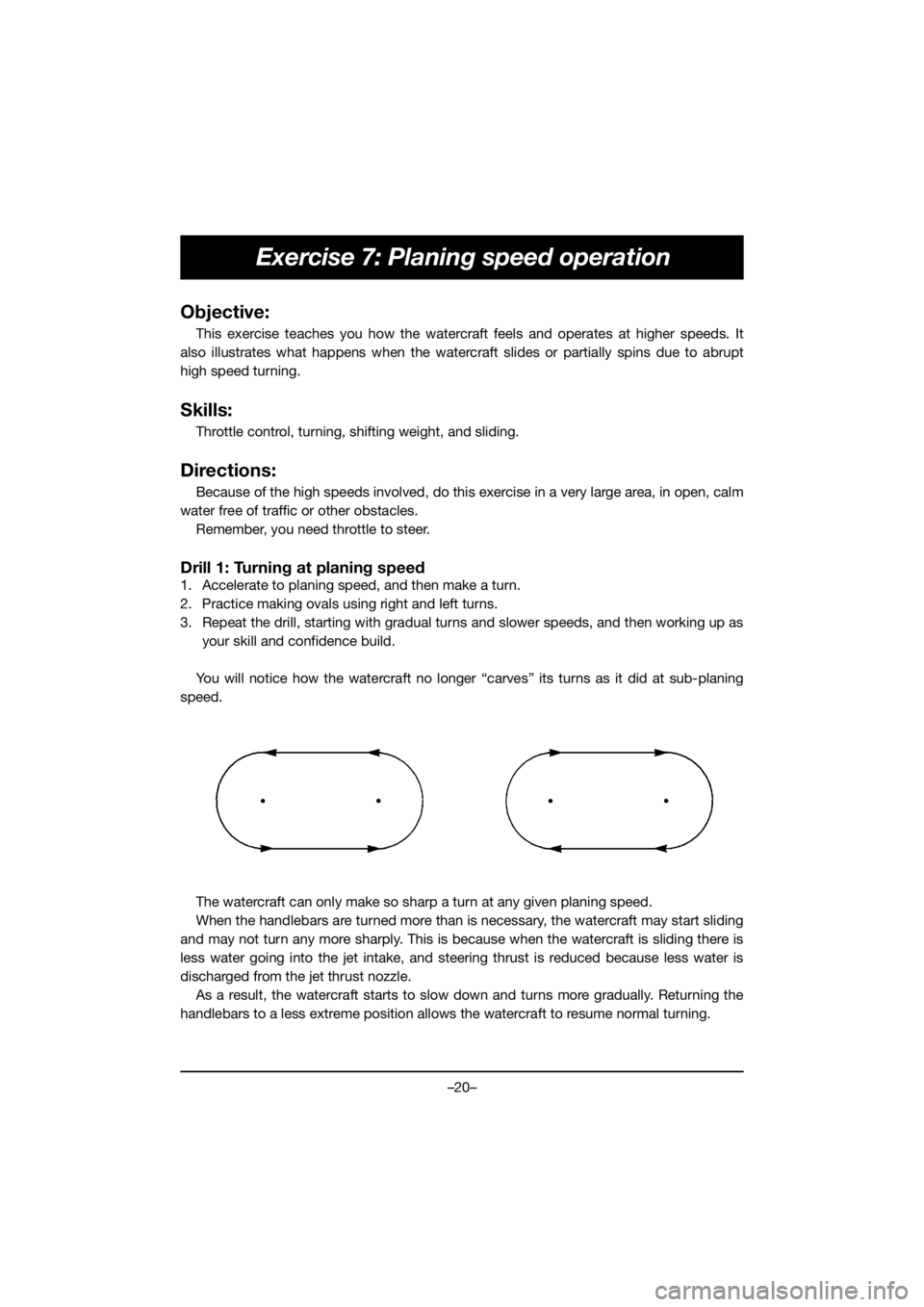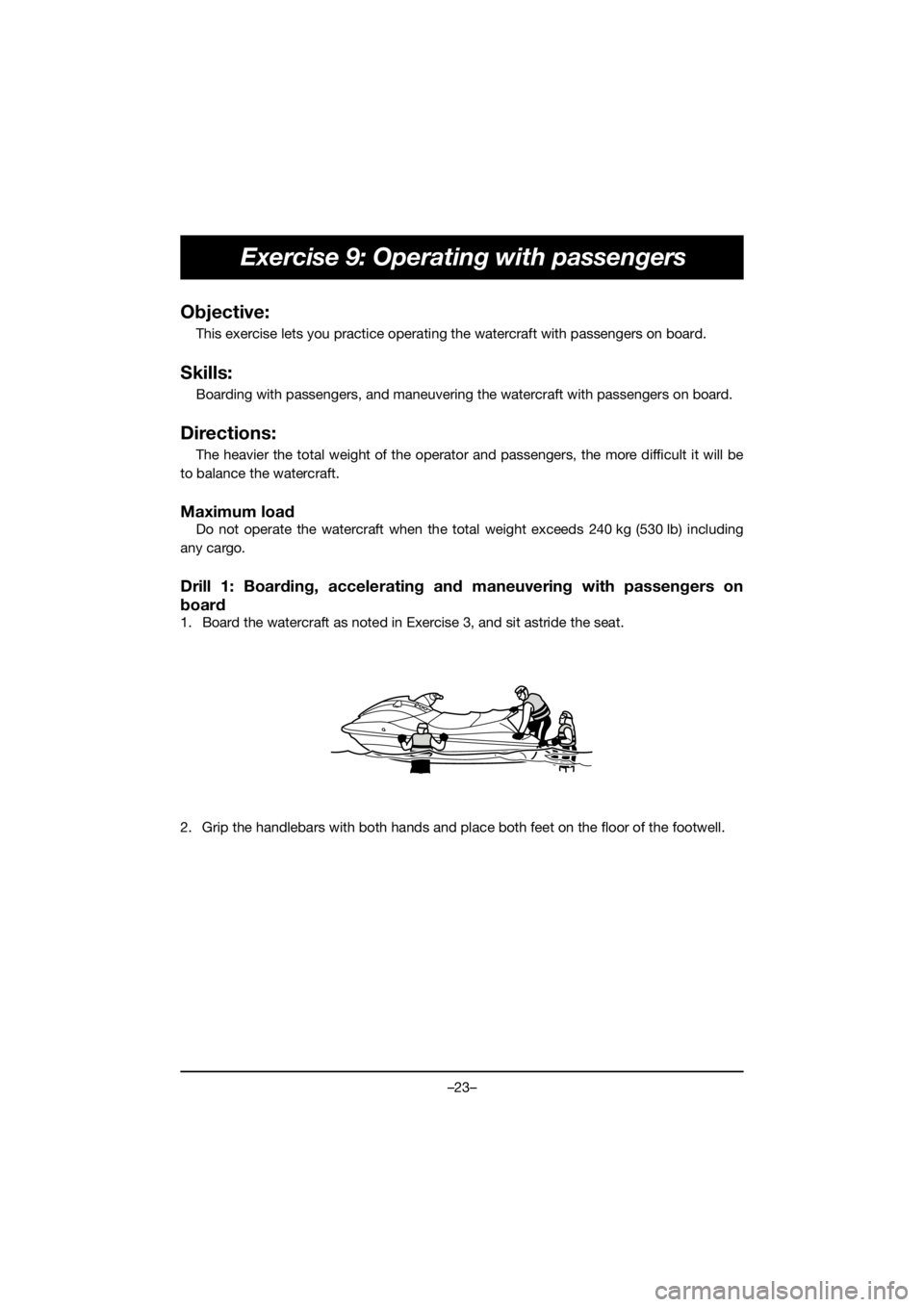weight YAMAHA VX-C 2021 Bruksanvisningar (in Swedish)
[x] Cancel search | Manufacturer: YAMAHA, Model Year: 2021, Model line: VX-C, Model: YAMAHA VX-C 2021Pages: 214, PDF Size: 4.23 MB
Page 17 of 214

–12–
Exercise 3: Boarding and balancing
Objective:
This exercise trains you to board the watercraft in deep water after falling off, and to
upright a capsized watercraft. Repeat these exercises until you can perform them without
difficulty.
Skills:
Boarding in deep water and balancing at a standstill.
Directions:
Practice this exercise near shore before going out into open water.
The heavier the weight of an operator, the more difficult it will be to balance the watercraft.
These exercises should be done without starting the engine.
Attach the engine shut-off cord to your wrist and keep the watercraft afloat in water that
is at least chest deep.
Drill 1: Boarding the watercraft
1. Swim to the rear of the watercraft and place both hands on the boarding platform, and then grasp the handgrip with one hand.
2. Pull yourself up to a kneeling position on the platform, and then move to the seat and sit astride.
F4N-70-forPrint.book Page 12 Tuesday, October 6, 2020 9:08 AM
Page 22 of 214

–17–
Exercise 5: Sub-planing speed maneuvering
Stopping
The watercraft is not equipped with a separate braking system. The watercraft slows
down by water resistance or, when operating in reverse, by the water jet. The watercraft
slows down as soon as the throttle lever is released, but will coast for a distance before
fully stopping. If you are not sure you can stop in time before hitting an obstacle, apply
throttle and turn in another direction. From full speed, the watercraft comes to a complete stop due to water resistance in
approximately 70 m (230 ft) after the throttle lever is released or the engine is stopped,
although this distance will vary depending on many factors, including gross weight, water
surface conditions, and wind direction.
VX / VX DELUXE / VX CRUISER / VX LIMITED: If the RiDE lever is squeezed to slow
down, the stopping distance is approximately 30% shorter than when the RiDE lever is not
used. However, this distance will vary depending on many factors, including gross weight,
water surface conditions, and wind direction.
Drill 1: Moving forward and turning in large ovals
1. Gradually accelerate forward to sub-planing speed, and then make a gradual right turn while maintaining your speed.
2. Repeat the drill, making a gradual left turn.
3. Repeat the drill, traveling forward and turning to make a complete oval.
Stopping distance
F4N-70-forPrint.book Page 17 Tuesday, October 6, 2020 9:08 AM
Page 25 of 214

–20–
Exercise 7: Planing speed operation
Objective:
This exercise teaches you how the watercraft feels and operates at higher speeds. It
also illustrates what happens when the watercraft slides or partially spins due to abrupt
high speed turning.
Skills:
Throttle control, turning, shifting weight, and sliding.
Directions:
Because of the high speeds involved, do this exercise in a very large area, in open, calm
water free of traffic or other obstacles. Remember, you need throttle to steer.
Drill 1: Turning at planing speed
1. Accelerate to planing speed, and then make a turn.
2. Practice making ovals using right and left turns.
3. Repeat the drill, starting with gradual turns and slower speeds, and then working up as your skill and confidence build.
You will notice how the watercraft no longer “carves” its turns as it did at sub-planing
speed.
The watercraft can only make so sharp a turn at any given planing speed.
When the handlebars are turned more than is necessary, the watercraft may start sliding
and may not turn any more sharply. This is because when the watercraft is sliding there is
less water going into the jet intake, and steering thrust is reduced because less water is
discharged from the jet thrust nozzle. As a result, the watercraft starts to slow down and turns more gradually. Returning the
handlebars to a less extreme position allows the watercraft to resume normal turning.
F4N-70-forPrint.book Page 20 Tuesday, October 6, 2020 9:08 AM
Page 28 of 214

–23–
Exercise 9: Operating with passengers
Objective:
This exercise lets you practice operating the watercraft with passengers on board.
Skills:
Boarding with passengers, and maneuvering the watercraft with passengers on board.
Directions:
The heavier the total weight of the operator and passengers, the more difficult it will be
to balance the watercraft.
Maximum load
Do not operate the watercraft when the total weight exceeds 240 kg (530 lb) including
any cargo.
Drill 1: Boarding, accelerating and maneuvering with passengers on
board
1. Board the watercraft as noted in Exercise 3, and sit astride the seat.
2. Grip the handlebars with both hands and place both feet on the floor of the footwell.
F4N-70-forPrint.book Page 23 Tuesday, October 6, 2020 9:08 AM